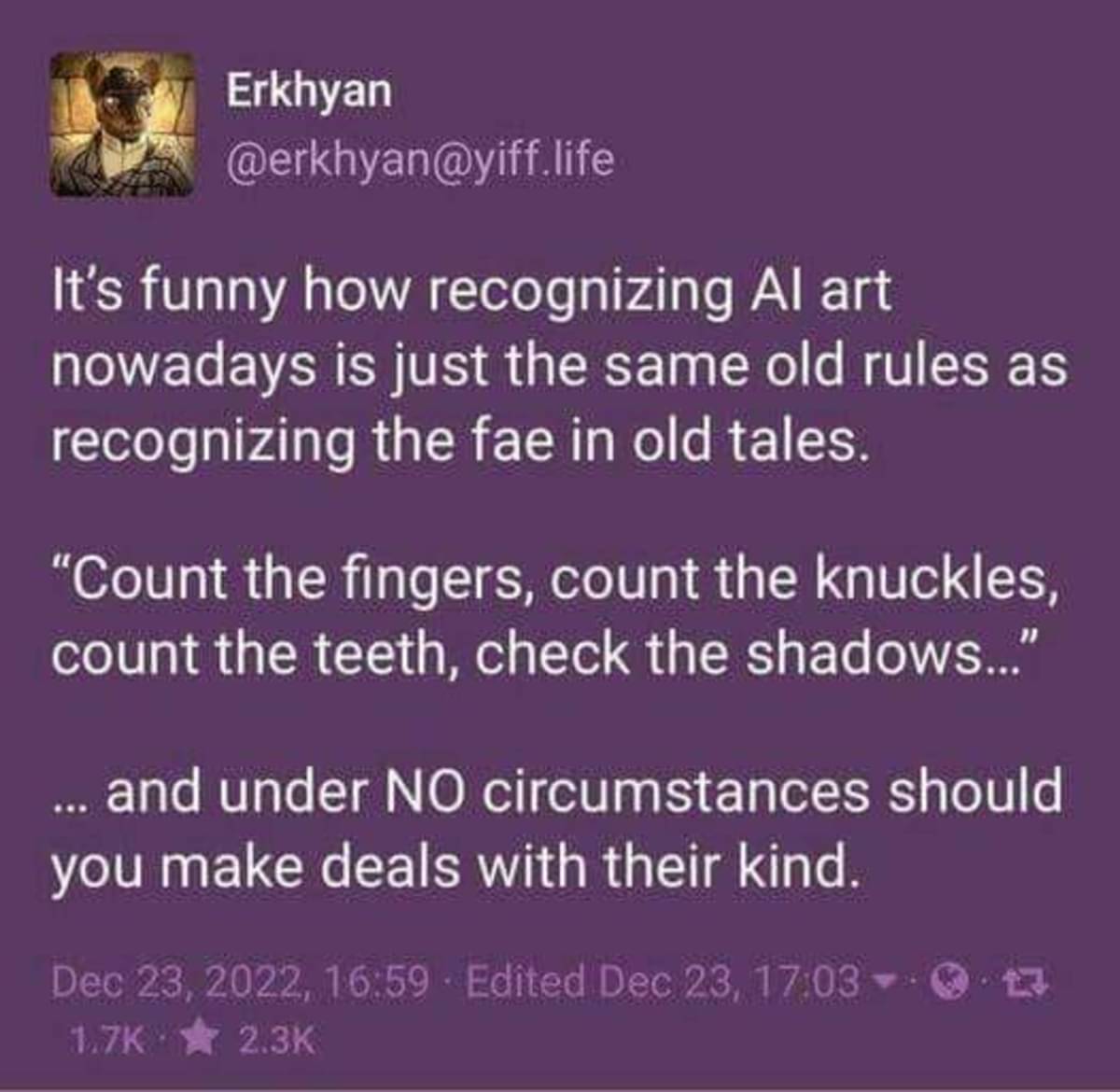this post was submitted on 05 Sep 2024
1267 points (99.3% liked)
Science Memes
10309 readers
860 users here now
Welcome to c/science_memes @ Mander.xyz!
A place for majestic STEMLORD peacocking, as well as memes about the realities of working in a lab.

Rules
- Don't throw mud. Behave like an intellectual and remember the human.
- Keep it rooted (on topic).
- No spam.
- Infographics welcome, get schooled.
Research Committee
Other Mander Communities
Science and Research
Biology and Life Sciences
- [email protected]
- [email protected]
- [email protected]
- [email protected]
- [email protected]
- [email protected]
- [email protected]
- [email protected]
- [email protected]
- [email protected]
- [email protected]
- [email protected]
- [email protected]
- [email protected]
- [email protected]
- [email protected]
- [email protected]
- [email protected]
- [email protected]
- [email protected]
- [email protected]
- [email protected]
- [email protected]
- [email protected]
- !reptiles and [email protected]
Physical Sciences
- [email protected]
- [email protected]
- [email protected]
- [email protected]
- [email protected]
- [email protected]
- [email protected]
- [email protected]
- [email protected]
Humanities and Social Sciences
Practical and Applied Sciences
- !exercise-and [email protected]
- [email protected]
- !self [email protected]
- [email protected]
- [email protected]
- [email protected]
Memes
Miscellaneous
founded 2 years ago
MODERATORS
you are viewing a single comment's thread
view the rest of the comments
view the rest of the comments

You know, thinking about it, I doubt this is a coincidence.
The finger-counting is familiar to me as a technique for lucid dreaming. If you look at your hands in a dream, your brain will kinda fuck it up, so if you train yourself to pay attention to that you realize you are dreaming and become lucid.
My guess is that the origin of fae is something like sleep paralysis deamons or hallucinations, and people realized they could detect those from the same flaws of our own imagination.
Now for AI, it isn't really drawing. What we are using in image-AI is still much more like projecting up a mental image, dreaming. We can't get it right all at once either, even our human brain is not good enough at it, it is reasonable image-AI makes the same kind of mistakes.
The next step would logically be to emulate the drawing process. You need to imagine up an image, then observe it at large, check for inconsistencies using reasoning and visual intuition.
Hone in on any problems, stuff that doesn't look right or doesn't make sense. Lines not straight.
Then start reimagining those sections, applying learned techniques and strategies, painter stuff (I am not an artist).
Loosely I imagine the ai operating a digital drawing program with a lot of extra unusual tools like paste imagination or telepathic select, or morph from mind.
The main thing differentiating dreaming from painting is that for painting you can "write stuff down" and don't have to keep it all in your head all the time. This allows you to iterate and focus in without loosing all the detail everywhere else.
Is this really useful? Like, is this something people ever need to do? I don't do lucid dreams very often, but the rare times a dream has lead me to the thought of "hold on, am I dreaming?" were basically immediately answered by just, uh, vibes, I guess? Like, it's always just been instantly obvious that I'm dreaming the moment I'd start questioning it, no tests necessary. At worst I might have to try to remember what I did the day before and what I was supposed to be doing that day and see if that is at all compatible with the scenario I'm dreaming about, which it usually isn't.
I think the idea is to build a habit of checking, so you don’t even need to have that “hold on, am I dreaming?” moment. You just habitually do that thing you always do, and then “oh it seems I’m dreaming. I didn’t notice”
I see. Will avoid, then. I don't like lucid dreaming, always wake up right away. Whenever I notice I'm dreaming it becomes hard not to notice that I'm in my bed and that I can feel my covers and by that point it's all over, so whenever I notice I'm dreaming I just cut the crap and open my eyes for a couple of seconds to wake myself up and then close them again so I can get back to proper sleep.